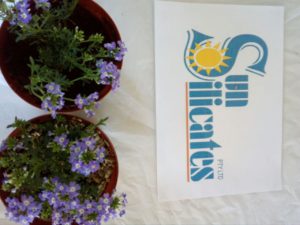SAVING YOUR GARDEN IN THE DROUGHT WITH VERMICULITE
As South Africa struggles with water shortages amidst a crippling drought, municipalities announced water restrictions and appealed to residents to use the scarce resource sparingly. According to the news, we need to reduce our water use by 15 percent.
A state of disaster has been declared in eight of South Africa’s nine provinces. The drought conditions experienced in most parts of the country were a result of natural phenomenon that were characterised by below normal rainfalls and increased maximum temperatures and heatwaves. The current drought has nearly depleted several major dams and led to countrywide water restrictions.
GARDENING IN DROUGHT CONDITIONS
With October being the middle of spring, we all want a beautiful garden! Little can compare to the beauty of nature, smelling the flowers and seeing all the beautiful colours. Unfortunately, the drought has made this quite difficult. Fortunately for us, we can work around it to a certain extent!
Your soil mix is the most important aspect of your outdoor grow. The easiest way to ensure a happy garden, is to blend your soil mix properly, using a multitude of nutritious and highly absorbent amendments. A good soil mix will absorb and store rainfall and irrigation water, releasing it to your plants as needed.
VERMICULITE
Sowing seeds and growing plants is an age old tradition but with time and research a whole host of new techniques and products are being made available to gardeners and nurseries to create the most ideal growing conditions for plants. One such product is Vermiculite and while this has been around for years, its use in gardening is only now starting to become popular. Vermiculite offers no nutrition, but it absorbs and holds large volumes of water.
Vermiculite is a mineral that occurs naturally. The word “Vermiculite” literally stems from the Latin word “Vermiculus”, which when translated to English means “little worm”. When vermiculite is subjected to heat, it expands (which is called exfoliation) to firm elongated worm-like particles which are incombustible, lightweight, compressible, highly absorbent, recyclable and non-reactive. Vermiculite is non-carcinogenic and 100% safe.
The traditional way of sowing seeds is still most popular and is also very effective, but there are now more and more reasons to move away from growing in peat compost and to using lighter and more environmentally friendly growing mediums. Some of the advantages of vermiculite include:
- Vermiculite is lighter than soil mediums. This is particularly important when growing indoors and when growing at height such as roof gardens; tiered greenhouses and grow rooms. A lighter medium also has the advantage of being easier to carry, store and manage in general.
- Vermiculite offer a sustainable solution to growing plants.
- Vermiculite is useful for germination of seeds in gardening. It is beneficial for seed germination due to its aeration properties, as well as its capacity for holding water. Due to both factors, vermiculite is helpful for directly contacting seeds.
- Vermiculite is really beneficial to plants and their roots. By adding vermiculite to the soil you can improve the soils ability to hold and release water back to the plants. Vermiculite is also porous and so will hold high levels of air in soils which is essential for both root respiration and for the existence of soil micro-organisms.
- Vermiculite can be used in hydroponics and soilless growing systems. These are beneficial in that little or no water or nutrients are wasted or washed away. Hydroponic growing systems work in a number of ways. Essentially they involve a system of sitting plant’s roots in a pot which is flooded with water and then allow to drain free. The benefits here include the reuse of water and nutrients as well as full control over watering and nutrient levels that the plants receive
- Vermiculite composts are highly useful for cuttings or rootings in gardening. Vermiculite compost can encourage growth of roots, which provides rapid plant anchoring as well as nutrient uptake. Before placing cuttings, it is essential to water the vermiculite thoroughly and make sure to avoid compressing the cutting’s base. For cuttings, a mix that is 50/50 is suitable.
- Vermiculite promotes CEC in soil. CEC is the Cation Exchange Capacity of soil particles. Cation are plant nutrients, example would be NH4+ (Ammonia), K+ (Potassium), Ca2 + (Calcium), Fe2+ (Iron). These are essential for plant growth and would exist in all soils. Vermiculite can hold these cations and release them into the soil as plants require them. This is the cation exchange capacity and this is an important process in soils. Vermiculite offers good ion exchange capabilities, and can absorb any excess nutrients and then gradually release them to the plants through the root hairs.
- On a more basic note vermiculite can be used as a mulch or dressing for to retain moisture and maintain the temperature of the soil. In the series of photos below, it is shown how the vermiculite is being used as a mulch / dressing. In the last photo, one can clearly see that the vermiculite retains the moisture after it has been watered.




- Other benefits of vermiculite in gardening include that, when it is dry, it does not deteriorate in storage, it minimizes and insulates fluctuations of soil temperature, it is not abrasive, it is sterile and organic and it is not an irritant. Vermiculite also is entirely free of problems such as weeds, pests and diseases. It is non-toxic and is not a fire hazard.
- As you probably know it holds water yet drains when it’s filled (just like a sponge!). The plant roots grow around the particles and take in whatever moisture they need and since the particles of vermiculite take a long time to dry out, moisture is always there for the plant enabling it to grow quicker and healthier.
THE SUNPERL VERMICULITE TEST
SunPerl Horticultural Vermiculite Vs Ordinary Soil
In the following test (with photos) we are going to prove how SunPerl horticultural vermiculite benefits your garden by saving water in this terrible time of drought.

Below we see our 2 soil mixtures that we will be using before they are blended. The top row (soil mix 1) is a 50% soil and a 50% compost mixture. The soil mixtures that can be seen at the bottom (soil mix 2) is a 30% compost and a 70% SunPerl horticultural vermiculite mixture.

Here (below) we have our soil mixes that are already mixed – on the left hand side, you can see SunPerl horticultural vermiculite mixed with compost.
On the Right hand side, the bag contains the soil and compost mixture.

The following photo illustrates how the SunPerl horticultural vermiculite and compost is mixed using your hands. The vermiculite mixture is then placed into a flower pot.


Here the ordinary soil and compost that have already been mixed, is placed into the flower pot. Both the soil mixtures are now ready for planting.

We then planted flowers in both the pots, each with the different soil mixtures. The pot on the left contains the soil / compost mixture, and the pot on the right contains the SunPerl horticultural vermiculite soil mixture.

The final step to show that vermiculite is water wise, we added 200 ml of water to both the pots with the plants. Before the water was added to both the different soil mixtures, the pots were placed in a plate to catch the excess water that may drain through the soil.

On the left hand side, we can see that the soil / compost mixture loses a lot of water when drained through the soil. Clearly a lot of water is going to waste!! This is exactly what we would like to reduce, or even better, eliminate in this time of drought!
On the right hand side, we can see that the SunPerl horticultural vermiculite mixture has excellent water retaining abilities. The water loss is significantly less, meaning that you don’t have to water your plants as frequently as when using the soil / compost mixture.

So let’s all do our part and save water in this time of need. If you have any questions in regards to Vermiculite, or are interested in our Vermiculite Summer Special, contact Sun Silicates (Pty) Ltd, or visit our website at www.sunsilicates.co.za



No Comments